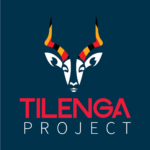Regional countries are set to increase market access for their agricultural products following the commencement of a new capacity building project to mainstream sanitary and phytosanitary standards (SPS) priorities into national policies.
The project covers five countries that are members of the Common Market for Eastern and Southern Africa (COMESA); Kenya, Uganda, Rwanda, Ethiopia and Malawi. It is being implemented under the ‘Prioritizing SPS Investments for Market Access (P-IMA) framework, an initiative of the Standards and Trade Development Facility (STDF).
Kenya is the second country after Uganda, to start implementing the project with the inception meeting taking place on Monday in Nairobi. The inception meeting was conducted together with a high-level stakeholder dialogue that brought together private sector, relevant public sector departments and institutions of government to build consensus on the most critical SPS priorities and investments.
The project is titled: ‘Mainstreaming SPS capacity building into the Comprehensive Africa Agriculture Development Programme (CAADP) and other national policy frameworks to enhance market Access’ and has a budget is US$ 464,075 (about Shs1.7 billion) out of which US$ 390,075 (about Shs1.4 billion) is provided by the STDF.
The P-IMA framework offers an evidence-based approach to inform and improve SPS planning and decision-making processes. It helps to link SPS investments to public policy goals including export growth, agricultural productivity, and poverty reduction.
Principal Secretary in the Ministry of Trade Dr Chris Kiptoo, represented by the Assistant Director of External Trade Mrs. Helen Kenani, opened the meeting. In his statement, he said the variation of SPS capacity across COMESA countries and the continent undermine the region’s capacity to trade with itself.
“The diversity of strengths and weaknesses on the continent demands greater collaboration between countries that belong to the same Free Trade Area (FTA), particularly the ACFTA that just came into force,” Dr Kiptoo said.
He observed that compliance with SPS measures opens tremendous export opportunities for producers and exporters, both at the intra-regional trade level and at the international level.
Intra-COMESA Trade
Currently, intra COMESA trade remains low relative to other regions, at around 11% of total COMESA exports with the majority of traded products being with low added value.
COMESA Director of agriculture and industry, Mr. Thierry Kalonji attributed this to lack of industrial diversification, the existence of Non-Tariff Barriers such as health standards requirements, supply side constraints and cumbersome border measures.
He cited the following as some of the SPS challenges that countries faced, which the new project seeks to address; varied Technical Barriers to Trade (TBT) standards and regulatory frameworks across member States, absence of good regulatory practice and, low levels of compliance in the public and private sectors.
“Almost 70% of the reported NTBs in the region are constituted by TBTs and SPS measures,” he said. “If they are not addressed, our countries will find it difficult to take advantage of the mega trade agreements such as the tripartite and the continental free trade area.”
With the majority of the 21 COMESA Member States heavily depend on agriculture, fisheries, and livestock, Mr. Kalonji said the production and trade of agricultural and fisheries produce is of high priority, if only as a stepping stone to industrialization.
Ms. Roshan Khan of the STDF as well as representatives of Trade Mark East Africa and Kenya Association of Manufacturers addressed the meeting.
In the next three days, the stakeholders in Kenya will be trained on the implementation and integration of the PIMA tool into national planning and investment processes.







